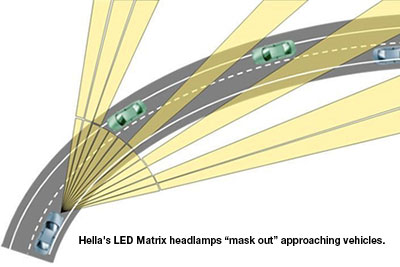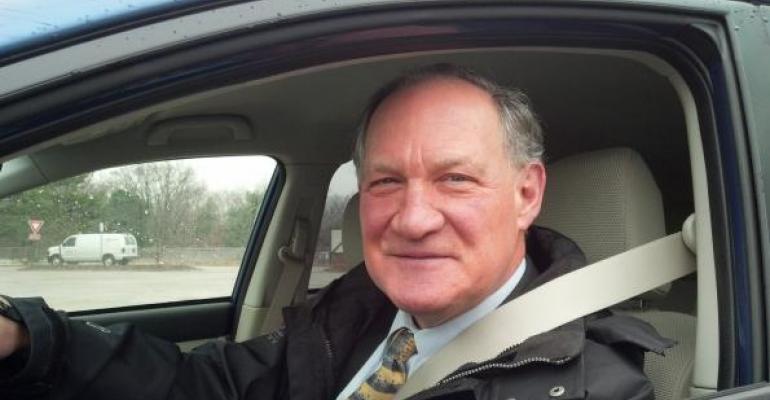NHTSA Administrator Mark Rosekind names four “Ds” that can cause drivers to get in car crashes: drinking, drowsiness, drugs and distraction.
I’d add a fifth: darkness, even though it’s intrinsically different from the other four. We can choose to pull over if we’re sleepy. We can abstain from doing bar shots before getting behind the wheel. We can resist looking at our smartphone screens as we merge into freeway traffic.
But we can’t alter nature and prevent night from falling. When it does, visibility is reduced, increasing the risk of operating a motor vehicle. It can turn ugly at night for drivers, passengers and hapless pedestrians.
We’ve come a long way from the early automotive days when acetylene and oil illuminated car headlamps. They really were “lamps.”
Today’s headlights are so much better. Their superior illumination allows nighttime drivers to better know what’s ahead.

The good news is existing technology makes headlights even better. The bad news is that they currently are not permitted in the U.S.
Matrix-beam LED lighting relies on cameras and sensors to create glare-free tunnels of light, allowing drivers to enjoy the visibility benefits of high beams without blinding other motorists.
The camera detects up to eight different vehicles, including oncoming traffic and vehicles directly in front. The beams automatically switch to low so as not to render sightless the drivers of detected vehicles.
German auto supplier Hella calls its system of directed, un-invasive lighting a bright idea. The system is available on cars in Europe and China, but not in the U.S. That’s because it has yet to receive federal regulatory approval, specifically from NHTSA. Testing has gone on for a few years now.
It’s frustrating for Hella to offer what it considers a public blessing and company profit-maker that’s barred from the world’s second-largest automotive market. Despite the exasperation, Hella executives remain diplomatic lest they come across as slamming American regulators.
“We don’t want to complain,” says Steffen Pietzonka, Hella’s head of Global Marketing Original Equipment Lighting, adding that General Motors and Ford have shown an interest in matrix-beam LED lighting.
But American regulators “want proof that under every situation nothing (bad) can happen,” he tells me. “In the U.S., it is very complicated. The main concern is (what effect the on-off high-beam system) will have on oncoming traffic.”
Each year at the North American International Auto Show in Detroit, Hella shows off its latest products in a suite near the vehicle exhibit floor. There’s an irony to that.
“We’re showing the new headlamps upstairs, but downstairs the vehicles on display aren’t equipped with them,” Pietzonka says.
NHTSA says it’s not sitting on what a lot of people in the automotive industry consider a breakthrough safety feature.
After checking with what he calls NHTSA’s “rule-making shop,” Bryan Thomas, the agency’s communications director, tells me this in an email:
“Both (U.S. Transportation Secretary Anthony Foxx) and Administrator Rosekind have spoken out about the need to identify and remove potential regulatory hurdles to safety improvements.”
To that end, the agency has conducted adaptive headlight research, and “is moving to take actions to permit this innovative safety technology,” Thomas says. The agency has performed research at the Vehicle Research and Test Center on European vehicles with the advanced lighting system, he reports.
So things are moving along, but the testing will be done when it’s done. “I unfortunately don’t have a timing update to share on when the next action may be, but I can say the actions are on track,” Thomas says.
So don’t mark your calendars quite yet. Even so, that update should brighten the day of safety-minded night drivers.





